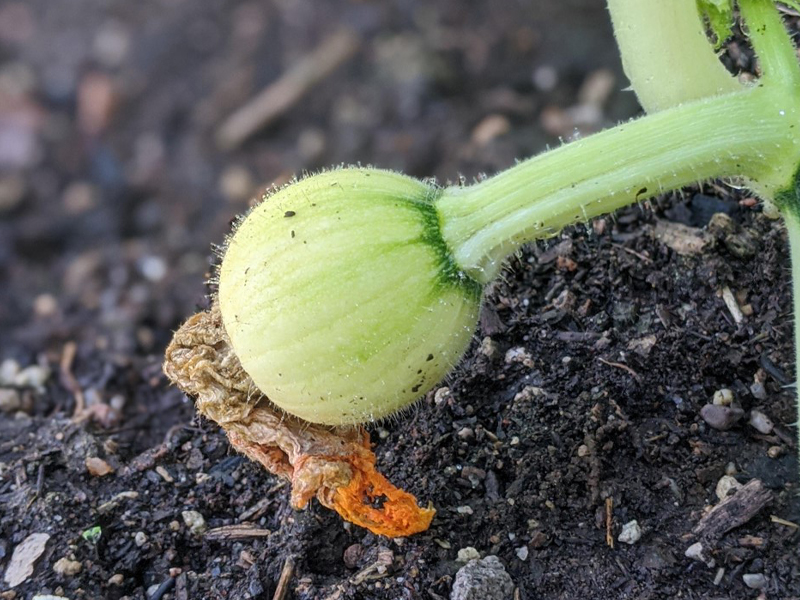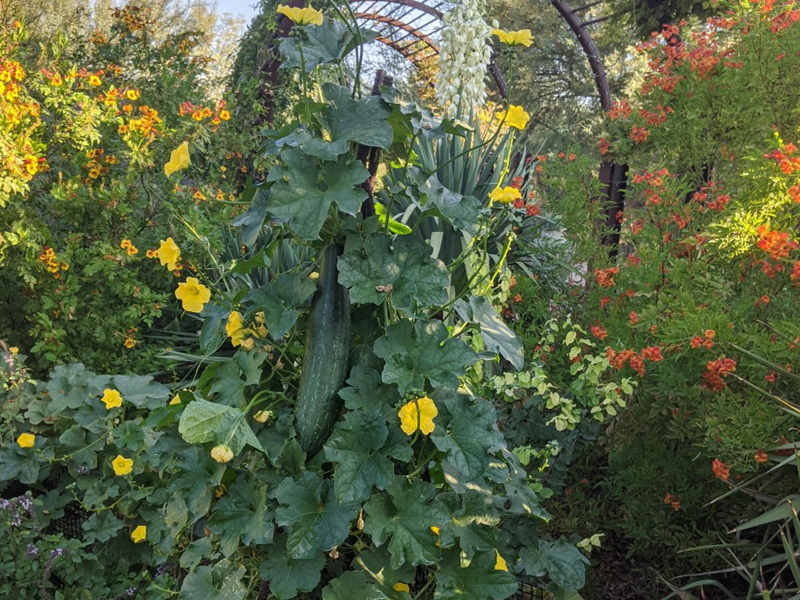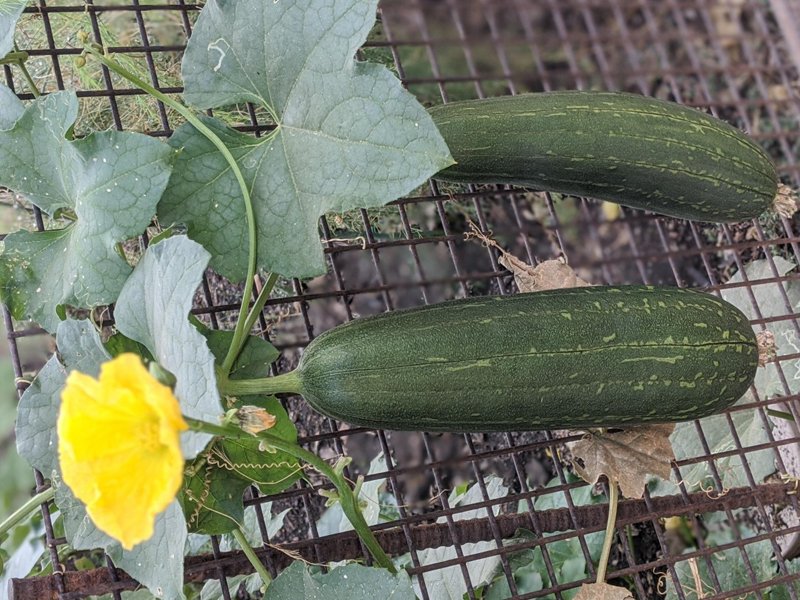It’s decorative gourd season! For many, the term ‘gourd’ evokes images of the bizarre, colorful novelty crops that appear by the bushel-load in farmers markets and grocery stores each October and just as suddenly disappear after Thanksgiving. For warm climates like the Southwest where summer’s end can be a subtle transition, a traditional cornucopia or table display overflowing with glossy gourds is a joyful proclamation that autumn has indeed arrived.
Still, WHY do these little gourds exist? They’re weird-looking, hard, bitter and clearly not great for eating. How did they become an unstoppable juggernaut of fall decor?
The human connection to growing gourds is essentially timeless. Domestic cultivation of gourds in America has been practiced for thousands of years. The term gourd may include fruit from one of several species in the squash or Cucurbitaceae plant family (aka cucurbits). By definition, gourds are typically cucurbits whose fruits are hard-shelled when mature, especially those that are dried and used for nonedible purposes.
The earliest cultivated gourds in America were bottle gourds (Lagenaria siceraria), which migrated into the Americas from Africa thousands of years ago. Indigenous cultures have long used bottle gourds to fashion jugs, bowls, dippers, spoons, birdhouses and even instruments like maracas. Unlike the yellow, day-blooming flowers of their cousins in genus Cucurbita, Lagenaria flowers are white and bloom at night, probably pollinated by moths. When dried, the pale green fruits turn brown, and their thin, dull outer coating is soaked and scrubbed off to reveal a luminous light-brown sheen. The gourd is cut or sawed open and the inner surface is scraped clean of dried debris. Gourds may be decorated by carving, wood-burning, dyeing or painting.
In more modern times, many colorful gourd varieties have been cultivated within the Cucurbita genus. Cucurbita pepo is a wide-ranging species that encompasses not only dozens of oddball ornamental gourds but also many common edible squashes, from fresh, thin-skinned summer squash like zucchini and pattypan to hard-hulled winter storage varieties like pumpkin, acorn and spaghetti squash. Cucurbita maxima is another species that produces large, hard-skinned gourds such as lakota, banana and hubbard. Western growers have bred a rainbow of novelty ornamental varieties out of both Cucurbita and Lagenaria species, with fanciful cultivar names like ‘Turk’s Turban,’ ‘Daisy,’ ‘Apple,’ ‘Goblin Eggs’ and ‘Speckled Swan.’ In 1937, the American Gourd Society was established and still exists to “promote the love of cultivating and crafting of gourds”.
Another vigorous cucurbit that’s popular with home gardeners is luffa gourd (Luffa aegyptiaca or L. acutangular). Many people are shocked to learn that luffas come from a plant, not from the sea. Luffa plants love our desert heat. While their fruits are edible like squash when young and tender, mostly they are grown for the mature gourd’s fiber-dense core, which when dried and peeled becomes an efficient, biodegradable scrubbing sponge.
Most gourd plants grow readily in our low desert climate. Typically planted in the warm days of March or April, some smaller varieties (particularly pumpkins) may also be started as late as June. Seeds grow best when sown directly into planting beds; if using transplants, be gentle with their sensitive roots. Plant gourds on the edges of a bed to give the plants ample growing room. Vines may grow slowly at first, but by midsummer will pick up in vigor and may become overwhelming unless pruned back. Trellising is also an effective way to manage vine growth.
Gourd plants must be started early enough for fruit to ripen completely before the vine dies back, which can take over 100 days. If picked before maturity, unripe gourds may rot instead of drying properly. Gourds harvested with part of their vine still attached will be less prone to rot. Harvested gourds should be ‘cured’ in a dark, dry location for a couple of weeks before being used. They may be washed with a mild soap or bleach solution. Some people choose to coat them in lacquer to preserve and enhance their beauty.
In the Americas, two genera of solitary, ground-nesting ‘squash bees’, Peponapis and Xenoglossa, are specialized pollinators of Cucurbit flowers. Imported European honeybees will also pollinate squash, but our native squash bees harvest Cucurbit pollen exclusively, and they tend to visit flowers earlier in the day and explore them more thoroughly than honeybees. Native squash bees pollinate an estimated 2/3 of all Cucurbit crops in the U.S.
Growers who find that their flowers aren’t producing fruit may want to give hand pollination a try. Gourd plants typically grow specialized male and female flowers on the same plant. The female flowers have tiny embryonic fruits forming between flower and stem, while male flowers have thin stems. Since the male’s pollen needs to fertilize the female organ (pistil) in the middle of the female flower, the easiest manual method is to pick the male flower, pull back its petals, and swab its exposed stamen onto a female flower’s pistil to distribute pollen. Pollen may also be transferred using a small paintbrush or cotton swab. Humming some romantic music while you pollinate is optional, but recommended. If you have an abundance of male flowers, remember that they are also edible and may be used in a variety of dishes, from quesadilla fillings to cheese-filled, batter-fried appetizers.
As you start planning your spring edible garden, consider adding a few decorative gourd vines to your beds for a heat-hardy, entertaining and useful fall harvest.



